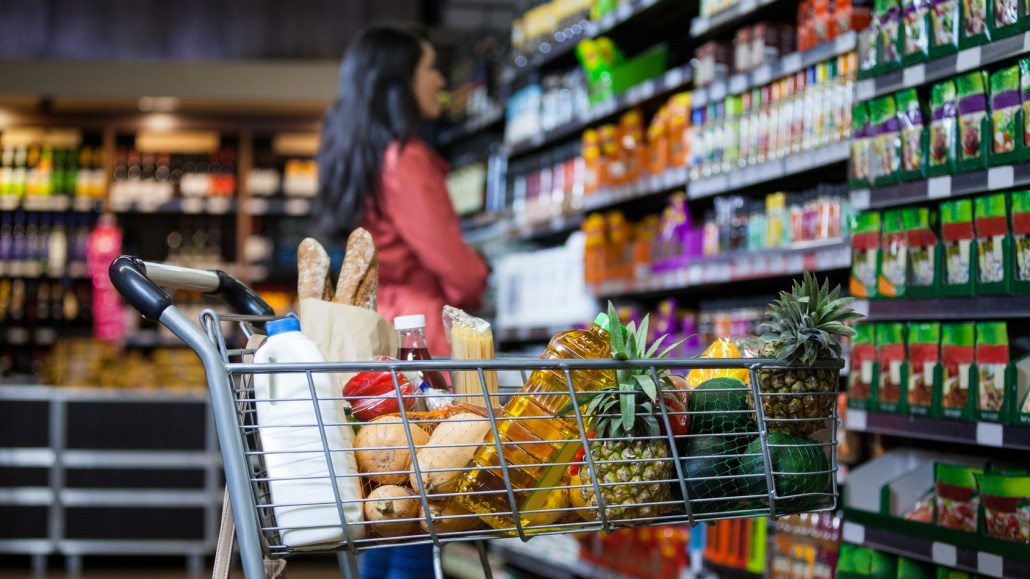Save 50% on a 3-month Digiday+ membership. Ends Dec 5.
How Spotify, Amazon, and Zappos built successful digital marketplaces

by Patrick McCarthy, SVP, marketplace partnerships, AppNexus
Global marketplaces are hardly a new phenomenon. By circumventing the Silk Road, the long overland trade road that once connected China to the West, European seafarers like Bartolomeu Dias and Vasco da Gama paved a more direct trade route to Asia and its goods. By connecting European buyers with Asian sellers more directly, these voyagers – in effect – were laying ground for a more sustainable marketplace, where supply-chain friction and overland pace of delivery were not obstacles.
As with yesterday’s explorers, so with today’s internet pioneers. By creating digital marketplaces where buyers and sellers can transact with each other directly, without middlemen or lengthy delivery time, we see history repeating itself in a remarkable way.
In many ways, the success of digital marketplaces like Spotify, Amazon and Zappos comes down to three governing principles. Successful marketplaces:
• Offer lower margins than competing platforms.
• Feature greater degrees of transparency – and thereby establish greater levels of consumer trust – than other would-be rivals.
• Minimize the supply-chain friction that connects buyers and sellers.
If marketplaces can manage all these– and offer customers quality inventory from a net effect of vendors that are actually worth buying from – then the sky’s the limit in terms of revenue and growth.
1.) Lower margins: Spotify
Take a music-streaming company like Spotify and stack it up against Apple. When Apple rolled out its Apple Music paid-subscription music-streaming service in June of 2015, many in the industry saw the move as a slow deathblow to its Swedish competitor. This prediction seemed justified, especially when Apple Music announced that it had acquired over 15 million new members over the year post-launch.
Ad position: web_incontent_pos1
What advantage did Spotify have over Apple Music that allowed it to remain a powerful, even dominant, force in the game, continuing to match and even outpace Apple Music’s subscribership? While Apple offers more songs than Spotify, Spotify has a distinct and strategic advantage over Apple Music: Unlike Apple Music, Spotify allows its listeners the choice to stream free, on-demand songs.
Spotify is able to provide its consumers with such a low take-rate by using streamed, sponsored audio advertising. While Apple has exclusive rights to The Beatles catalogue and Taylor Swift, but Spotify’s got over 100 million users, all of whom listen to sponsored ads.
2.) Greater transparency: Zappos
Few online marketplace companies in the world take greater pride in demonstrating transparency to their customers than Zappos, the online shoe retailer (and now a division of Amazon). Zappos’ CEO, Tony Hsieh, has a lot to say about the virtues of corporate transparency. He makes the case that when digital marketplaces wall away their secrets – leaving their vendors and business partners in the dark as to how they operate – they create unnecessary levels of mistrust and brand dissatisfaction.
Hsieh’s company practices what he preaches: Visitors who opt to take a tour of Zappos headquarters can expect to be treated to exclusive question-and-answer sessions with specific marketing, UX and customer service teams. Zappos’ adventures in radical transparency have paid off handsomely: The company still makes a reliable profit of more than two billion dollars per year. The virtues of radical transparency aren’t necessarily for the faint of heart, but when employed correctly they elevate a company’s reputation above competitors in ways that would make even Warren Buffet proud.
3.) Minimal Supply-Chain Friction: Amazon
Few digital marketplaces have reinvented themselves as consistently – and persuasively – as Amazon has. The company began life as an online bookstore, only to mushroom into a data-driven, omnichannel, ecommerce marketplace. But running one of the largest ecommerce businesses on Earth doesn’t come without friction. According to one in-house company report, the total movement of boxes and containers from its warehouses cost Amazon a whopping $11.5 billion in 2015.
Ad position: web_incontent_pos2
That said, Amazon isn’t one to balk at logistical hurdles. In fact, Amazon has begun to create a fleet of its own cargo aircraft that will pick up and deliver freight from Amazon warehouses directly to cities where that freight’s destined. Not only does this save Amazon a reported $1.1 billion, but it also gives the company greater autonomy over its supply chain, from the moment a customer clicks the “Purchase” button to the minute that package gets delivered.
While a music streaming console, online shoe retailer, and a dedicated fleet of cargo delivery aircraft might not seem to have much in common with the caravans of the silk road, they are all subject to the same marketplace fundamentals. Now, as it was then, business marketplaces succeed through increased efficiency and transparency, in order to engage and retain consumers on the open internet.
More in Marketing

Ulta, Best Buy and Adidas dominate AI holiday shopping mentions
The brands that are seeing the biggest boost from this shift in consumer behavior are some of the biggest retailers.

U.K. retailer Boots leads brand efforts to invest in ad creative’s data layer
For media dollars to make an impact, brands need ad creative that actually hits. More CMOs are investing in pre- and post-flight measurement.

‘AI is permeating everything we do’: How Guitar Center developed 2 AI tools this year
This summer, the company launched a chatbot called Rig Advisor to help customers find the right instruments and products.
Ad position: web_bfu